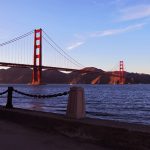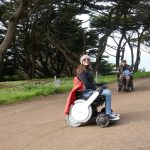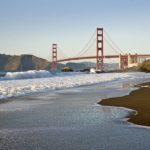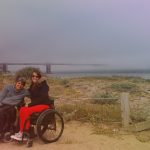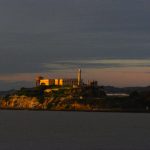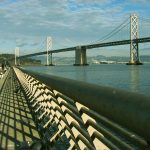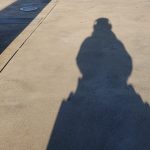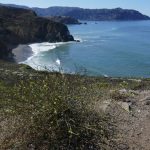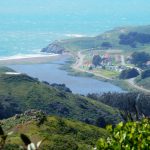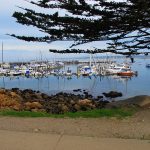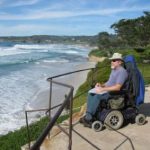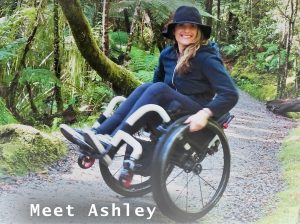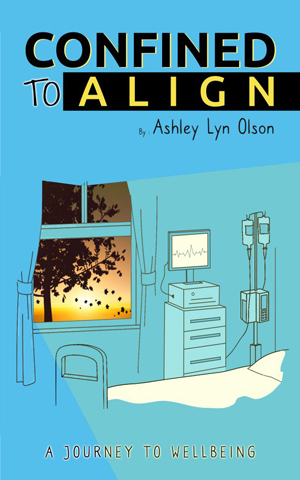Often windswept, foggy, and cold, San Francisco’s main beach is nonetheless a respite from the bustle along much of the city’s eastern waterfront. Ocean Beach is typically sparsely visited, though a warm weekend or special event can attract a crowd.
When it’s not fogged in, you can see from Montara Mountain and Pedro Point in the south, across the mouth of the Golden Gate to the Marin Headlands and Point Reyes; on a particularly clear day, you may catch a glimpse of the Farallon Islands, 28 miles offshore. The ocean here can be wild with huge breakers, and often the riptides are so powerful that even wading is unsafe. Nonetheless, experienced surfers and wind sailors ride these waves nearly every day, and hardy fishermen, beachcombers, and dog walkers brave the sands regardless of the weather.
History
For many years, this four-mile stretch of beach was isolated from the rest of San Francisco by miles of sand dunes called “the Outside Lands,” now the residential neighborhoods of the Sunset and Richmond districts. In the late 1800s, visitors came by horse, carriage, or trolley to enjoy such attractions as the Cliff House, Sutro Baths, the gardens of Sutro Heights, and other attractions. The Great Highway was built in the 1920s, and paved paths were eventually extended along most of the beach.
Visitor Center
The Golden Gate Park visitor center is across the Great Highway from the Ocean Beach Esplanade, nestled into the western edge of the park near JFK Drive. The visitor center occupies the ground floor of the Beach Chalet, a 1925 Spanish Revival-style building designed by Willis Polk, which originally housed a lounge and bathing facilities for Ocean Beach swimmers. You can view frescoes that Works Progress Administration artists painted on the walls in 1936-37 and pick up information about the park; there is also a small gift shop. On the second floor is the Beach Chalet Restaurant and Brewery; the Park Chalet restaurant juts into Golden Gate Park behind the visitor center.
Ocean Beach Coastal Trail
see access criteria for definitions
- Trailhead: Northern end: Entry to the Esplanade is provided by several ramps: one a short way up the hill leading to the Cliff House, and one each at stairwells 15, 21, and 27. Southern end: Sloat Boulevard near the Great Highway.
- Length: 2-4 total miles
- Typical Width: 4 ft. & above
- Typical Grade: Level
- Terrain: Hard
- Obstacles: Blowing sand and overgrown vegetation may impede travel, particularly along the Noriega Seawall promenade.
Description
Wide, paved paths run the entire length of Ocean Beach, but they offer a wheelchair rider mostly visual access, and even that is limited. At the northern end is the Esplanade, which extends along the ocean side of the Great Highway from the Cliff House to Golden Gate Park. The Esplanade is protected from the wind and blowing sand by a seawall that also blocks the view from a wheelchair, but you do see beach and ocean through breaks in the wall where stairs lead to the sand.
If you have brought along a beach wheelchair, you can get out onto the beach just south of Stairwell 28, where the sand meets the sidewalk, or descend to it via a broad, fairly steep concrete ramp (built in the 1920s for equestrians, it is not wheelchair-compliant but may be managed with assistance) near the intersection of the Great Highway and John F. Kennedy Drive, on the northern end of Golden Gate Park. On a clear day, you can also get a good view of the ocean, Seal Rocks, Cliff House, and Marin headlands from the top of this ramp.
Golden Gate Park, which you can enter across the Great Highway at JFK Drive, is a day’s trip or more all by itself. If you decide to visit, you may want to just cruise around on the myriad level and paved trails and sidewalks that wind through the park’s 1,000 acres; some roads are closed to autos on Sundays year-round, and on Saturdays as well during the summer. Here at its western end are two windmills that once pumped water to irrigate the park. The northern or Dutch Windmill, closest to the Beach Chalet, is set within the Queen Wilhelmina Tulip Garden and is well worth a side trip in early spring when the tulips are in bloom; the southern (Murphy) windmill is undergoing restoration.
Resume your trip via a paved multi-use trail that runs for more than two miles along the east side of the Great Highway, from the Beach Chalet south to Sloat Boulevard. At Pacheco and Rivera streets, you can again cross the highway to a wide, paved promenade that runs along the ocean side, below street level, between Noriega and Santiago. Grasses help screen out the noise of highway traffic. Here again, the walkway has a seaward wall that mostly blocks a wheelchair rider’s views, but in a few places, semicircular stone balustrades provide glimpses of the beach and coastline. Drifting sand may block portions of this walkway, especially at either end and on my visit in the winter of 2012, the Pacheco Street entry was blocked by both sand and an overgrown ice plant. At Rivera Street, you can cross back over to the multi-use trail and continue to Sloat Boulevard, or return to your starting point.
Accessibility Details
The facilities listed below meet all of our access criteria unless otherwise noted.
- Beach Wheelchair: Yes
- Accessible Parking: Yes
At the northern end of Ocean Beach, several accessible spaces are near the ramps to the sidewalk and Esplanade, west of the Great Highway: one just a short way up the hill toward the Cliff House, and several at stairwells 15, 21, and 27. Several, including some with access aisles, are in the Beach Chalet parking lot on the east side of the highway. At the southern end of the beach, two accessible spaces with access aisles are in the parking lot at the end of Sloat Boulevard, west of the Great Highway, and several are along Sloat Boulevard near the zoo. - Accessible Restroom: Yes
At the Sloat Boulevard parking lot and the ground floor of the Beach Chalet
Other Things of Interest
About two miles south of Ocean Beach on Skyline Boulevard is Fort Funston, once a coastal defense installation and now a windswept blufftop park favored by hang gliders and dog walkers. Wheelchair accessibility to the trails is limited by steep slopes, blowing sand, and crumbling pavement, but an accessible boardwalk leads to an overlook where on a clear day you can see many miles up and down the coast and watch hang gliders soar along the bluffs.
Additional Information
- Hours: Always open
- Fees: None
- Public Transportation: San Francisco Municipal Transportation Agency
- Dogs: On a leash. From stairwell 21 south to Sloat Boulevard, dogs must be on leash year-round except from May 15 to July 1. Off-leash dogs under voice control are allowed on the beach north of stairwell 21 (across from Golden Gate Park)



